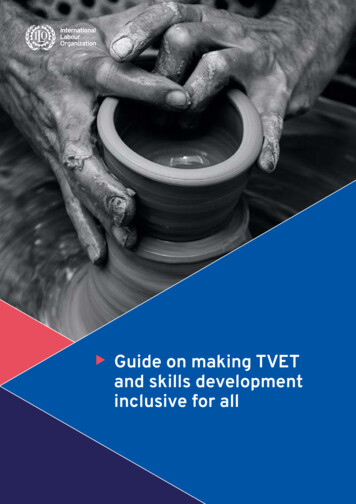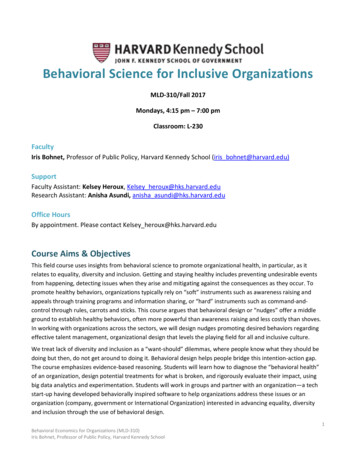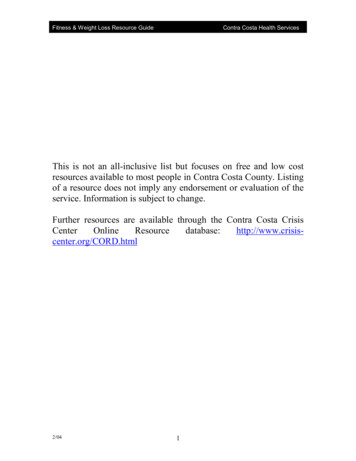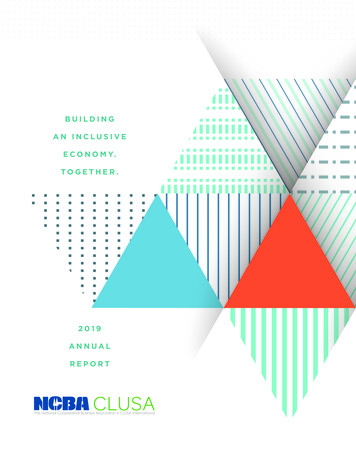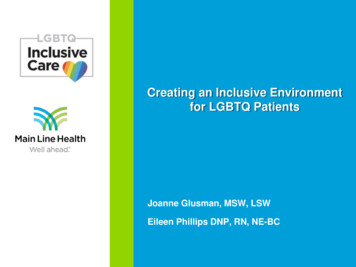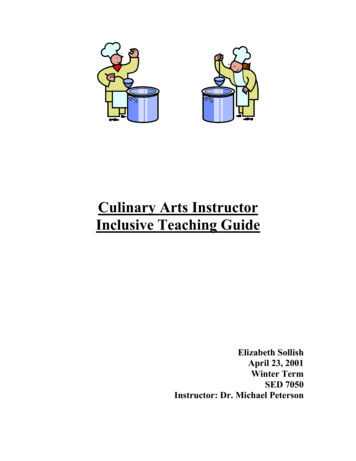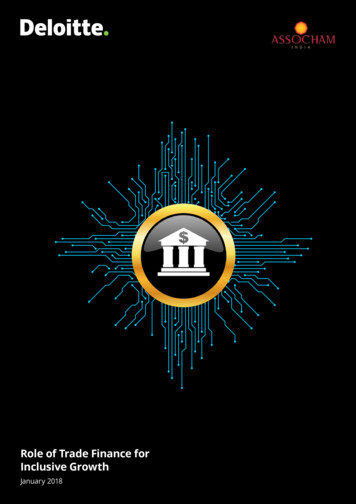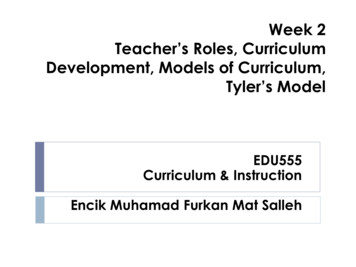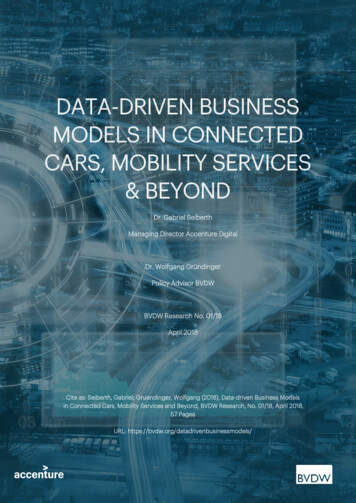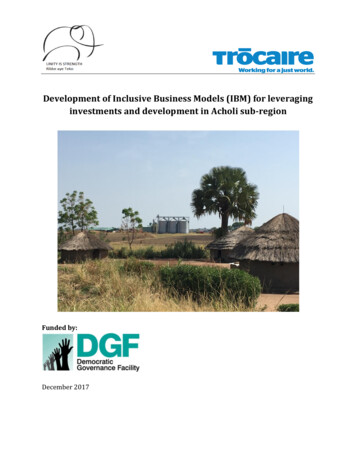
Transcription
Development of Inclusive Business Models (IBM) for leveraginginvestments and development in Acholi sub-regionFunded by:December 2017
AcknowledgementsThe authors of this report John Jagwe Ph.D. and Christopher Burke wish to express specialthanks to Ms. Susan Toolit Alobo, Martina O’Donaghue and Ian Dolan of Trócaire for thesupport and feedback rendered in executing this assignment. The authors are also thankfulto the respondents interviewed during the course of the research and to the Joint Acholi SubRegional Leaders Forum (JASLF) for the constructive inputs made to this work and theDemocratic Governance Facility (DGF) for the support necessary to make this research andreport possible.iiJASLF/Trócaire – Farmgain IBMsDecember 2017
Acknowledgement of AuthorsThis report was authored by Dr. John Jagwe and Mr. Christopher Burke of Farmgain AfricaLtd for Trócaire Uganda as part of the overall research project on customary land practicesin AcholiiiiJASLF/Trócaire – Farmgain IBMsDecember 2017
CUWFPAmatheon Agri UgandaArea Co-operative EnterprisesAssistant Veterinary OfficerBritish America TobaccoDepartment for International DevelopmentFood and Agriculture OrganizationFlue Cured VirginaHectareHuman Immunodeficiency Virus Infection and Acquired ImmuneDeficiency SyndromeInclusive Business ModelInternational Foundation for Agricultural DevelopmentInternational Financial Co-operationMetric tonsNorthern Uganda Agricultural CentreNorthern Uganda – Transforming the Economy through ClimateSmart Agri-Business Market DevelopmentPeople 4 PeoplePrimary Co-operative SocietyProcessor-Driven MarketingPeople with DisabilitiesRural Producer OrganizationUganda ShillingsUnited NationsSavings and Credit CooperativeSite coordinatorsUnited States Agency for International DevelopmentVegetable Oil Development ProjectWest Acholi Cooperative UnionWorld Food ProgrammeivJASLF/Trócaire – Farmgain IBMsDecember 2017
Contents:Acknowledgements. iiAcknowledgement of Authors . iiiAcronyms . ivContents: . vList of Figures . viii1. Introduction . 11.1 Background . 11.2 Objectives of the assignment. 11.3 The task . 21.4 Deliverables. 22. Methodology and approach. 33. Inclusive business models . 44. Acholi Sub-Region . 54.1 Unique characteristics of Acholi Sub-Region . 64.2 Agricultural Sector . 6Constraints to Agricultural Development . 7Environmental Challenges . 7Infrastructure . 74.3 Tenure systems in the Acholi Sub-Region . 8Model 1: Integrated Cooperative Model . 10Description of the Integrated Cooperative Model: . 10Rationale and philosophy of the Integrated Cooperative Model . 11Components of the Integrated Cooperative Model . 11Perceived benefits and merits of the Integrated Cooperative Model . 12Inclusivity of vulnerable groups (youth, women, disabled, resource-poor) . 13Main disadvantages/challenges of the Integrated Cooperative Model . 14Risks and threats associated with the Integrated Cooperative Model . 14An illustration of where the UCA model been used successfully . 14Set-up costs and financing arrangements of the Integrated Cooperative Model . 15Model 2: The Processor-Driven Marketing Model (PDM) . 15vJASLF/Trócaire – Farmgain IBMsDecember 2017
Description of the PDM model . 15Rationale and philosophy of the PDM model . 17The components of the PDM model: . 17Perceived benefits and merits of the PDM model . 17Inclusivity of the PDM model to vulnerable groups (youth, women, PWDs, resource-poor) . 18Disadvantages/challenges of the PDM model . 18Risks and threats associated with the PDM model. 19An illustration of where the PDM model been used successfully . 19Set-up costs and financing arrangements of the PDM model . 19Model 3: The Joseph Initiative model . 20Description of the JI model . 20Rationale and philosophy of the JI model. 21The components of the JI model: . 21Perceived benefits and merits of the JI model . 21Inclusivity of vulnerable groups in the JI model (youth, women, PWDs, resource-poor) . 22Disadvantages/challenges of the JI model. 22Risks and threats associated with the JI model . 22An illustration of where the JI model been used successfully . 23Set-up costs and financing arrangements of the JI model. 23Model 4: The AFGRI model . 24Description of the AFGRI model. 24Rationale and philosophy of the AFGRI model . 25The components of the AFGRI model: . 25Perceived benefits and merits of the AFGRI model . 26Inclusivity of vulnerable groups in the AFGRI model (youth, women, PWDs, resource-poor). 26Disadvantages/challenges of the AFGRI model . 26Risks and threats associated with the AFGRI model . 27An illustration of where the AFGRI model been used successfully . 27Set-up costs and financing arrangements of the AFGRI model . 276. Recommended models . 287. Applicable models to prominent enterprises . 29viJASLF/Trócaire – Farmgain IBMsDecember 2017
7.1 Proposed model for Cattle . 307.2 Proposed model for Charcoal . 317.3 Proposed model for Shea nut . 328. Conclusion . 33Annex 1: Report on Agricultural Enterprises in Acholi Sub region. . 35Agricultural Enterprises in the Acholi Sub-Region . 351. West Acholi Cooperative Union (WACU) . 372: AFGRI. 373: Amatheon Agri Uganda Ltd (AAU) . 384. FOL Logistics . 405. Bukona Out growers Agricultural Processing Company . 416. Alliance Once . 437. Omer Farming . 448. Horyal Investment Company Holdings . 449: Northern Uganda Agricultural Centre (NUAC) . 4510: Vinayak . 45Endnotes . 47viiJASLF/Trócaire – Farmgain IBMsDecember 2017
List of FiguresFigure 1: Diagram depicting the integrated cooperative model . 11Figure 2: Diagram depicting the PDM model . 16Figure 3: Diagram depicting the Joseph Initiative model . 20Figure 4: Diagram depicting the AFGRI model . 24Figure 5: Diagram depicting the Private investor-driven hybrid model . 29Figure 6. FOL Rice crop in Nwoya District, rice crop . 40viiiJASLF/Trócaire – Farmgain IBMsDecember 2017
1. IntroductionThe report provides a brief description of the agriculture sector across the Acholi SubRegion. It then explore four models currently being implemented in Uganda that strengthenand promote existing best practices for the
spell out at least 4 (or more) IBM options that local actors could choose from, detailing the requirements and steps involved in establishing them. 1.2 Objectives of the assignment The specific objectives of this study were: i. To set out an ownership framework for each of the 4 (or more) proposed business models, and of key project assets such as land and processing facilities that might .
